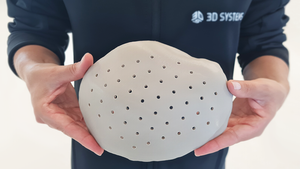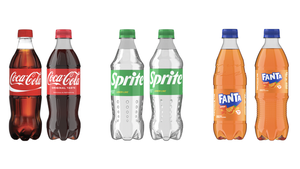In part one, design engineer Michael Paloian outlined the first four milestones of a product-design project, ending with the “cornerstone” of the product-design cycle — concept refinement and detailing. The milestones leading up to the final phase — testing, verification, validation — are discussed here.
August 16, 2020

In part one of this two-part article, design engineer Michael Paloian outlined the first four milestones of a product-design project, ending with the “cornerstone” of the product-design cycle — concept refinement and detailing. The milestones leading up to the final phase — testing, verification, validation — are discussed here.
As a reminder, most product-design projects progress through similar evolutionary steps of development. They are:
Project Planning – Specifications, Schedule, Budget, and Risk
Research and Exploration
Concept Development/Exploration
Concept Refinement and Detailing
Engineering Development/Prototyping
Preproduction Prototype
Documentation
Tooling Release and Fabrication
Production Liaison
Testing, Verification, and Validation
Design projects vary in complexity, and some may require only a few of the steps outlined above while others may require more phases of development. Each of these development steps can be considered a project milestone. In part two of this article, we will discuss the considerations that must be included within each of these milestones starting with step five, as well as the real-world factors that often alter the best-laid plans. Steps one through four are discussed in part one of this article.
5. Engineering Development/Prototyping
Most projects gradually transition from one phase of development to the next versus abruptly closing one chapter and opening a new one. A realistic transition from the previous phase to engineering development is gradual, iterative, and highly interactive. As aesthetic design details are worked out by industrial designers, engineers are concurrently superimposing the proposed concept over technical parameters. This lengthy process requires extremely good communication between the engineering department and the entire design team. Engineering development of plastic parts within a complex system requires multidisciplinary skills, experience, and knowledge. Engineers or engineering teams must completely understand the product, its use and market, environmental considerations, safety, structural requirements, design for manufacturing (DFM), plastics material options, tool design, and many other areas of knowledge. Engineers with expertise in designing plastic parts should have a basic understanding of plastic materials. Since there are hundreds of thousands of plastic materials to choose from, it’s advantageous for these individuals to rely on material suppliers, molders, or plastics material consultants to assist them in selecting the optimal material for a given application. Choosing the right plastic material is critical to the performance, safety, and reliability of any plastic product. It will also affect the design. Material selection could influence the number of parts required for a sub-assembly, wall thickness, or structural features such as ribs. In addition, engineers should also reach out to molders and tool makers during the initial phases of part design to avoid the costly task of completely rebuilding a CAD model due to feature changes at the root of the feature tree. Since solid CAD models are created from a series of interdependent features that can often exceed many hundreds, it’s undesirable to change those at the root of the list. These changes can result in costly man-hours of rework. This milestone phase of design development requires designers and engineers to constantly interact with numerous project contributors to avoid constant and unnecessary rework. A key requirement for this interactive process to progress efficiently is the regular exchange of honest and decisive information. There is no room in this process for bureaucrats and indecisive individuals solely concerned with job security. Information must be shared quickly, honestly, and decisively. Engineers must maintain an open mind and be willing to continually subject their designs to critical scrutiny.
All complicated innovative products require one or more intermediate prototypes during every phase of development. The type of prototype will depend on the parameter being evaluated. It’s surprising how many companies invest hundreds or thousands of man-hours developing a complete design before fabricating a prototype. This approach often results in products with serious hidden design flaws or extremely delayed product introductions with huge cost overruns. Product designs can be virtually guaranteed to be introduced on time, on budget, and with the highest performance if critical parameters are identified from the outset of the project. Identifying critical parameters that could affect the reliability or performance of plastic parts requires lots of knowledge. Therefore, it is ideally conducted by a team of project contributors with different areas of expertise. Materials experts, for example, may raise questions about environments of use and proposed product assembly. Exposure to ultraviolet light, chemicals, thermal considerations, regulatory requirements, fatigue, and so forth will affect the type of plastic material to be specified. Tool designers and molders may identify potential molding problems that could result in poor fills, knit lines, sink marks, or undercuts. Engineers are often faced with situations where no reliable information is available. This is when a prototype is required to determine the best solution. An example might be something as simple as evaluating the long-term performance of a plastic part exposed to a chemical or lubricant under stress for a specified period of time. Another example might be evaluating the feel of a snap lock for a cover or cap based on a specific material. A third example might include the impact strength of a knit line for a glass-filled nylon material. Each of these examples will require a prototype that could range from a sample chip of plastic to a small injection-molded test part or a 3D-printed prototype. Establishing the test parameters and procedures is as critical as identifying the potential failure point of a product.
6. Documentation
Product documentation is a closing chapter of the engineering development and design process. At one time before 3D CAD, parts were fully detailed and dimensioned with tolerances in 2D orthographic drawings, which were released to tool makers for production tooling. Today, 3D CAD files are released to tool makers for machining molds and the 2D documentation is used as reference information. 2D drawings are rarely fully dimensioned, since CNC machines are programmed directly from data within 3D CAD files that contain all the dimensional and geometric information. Although this process does not depend upon 2D drawings for fabricating molds, it is highly dependent on the technical information stated in the documentation. 2D orthographic production control drawings typically contain the following information:
Overall top, front, and side views, plus sections and details when needed;
overall dimensions plus critical dimensions and tolerances;
material specifications;
surface finish/texture;
color;
quality specs; and
special notes.
Although this list is not inclusive of every significant specification, it does represent the most common parameters. Dimensions can be specified using conventional formats or with geometric tolerances that provide more explicit information.
This significant milestone in the design process can be considered equivalent to a contract between the molder and you, the customer. A significant portion of the documentation includes assembly drawings, which are critical to the overall performance, safety, and reliability of the product. Plastic subassemblies frequently include any of the following hardware or information:
inserts
adhesives
ultrasonic bonds
labels and decals
fasteners/screws
pad printing/silk screening
post machining
press fits
Although this list is not all inclusive, it does represent many of the commonly assembled parts and operations for plastic parts. Engineers should have a comprehensive understanding of these operations, including materials, techniques, precautions, and consequences. Improper specifications or omissions could result in serious product failures or chronic product malfunctions. For example, specifications for adhesives are extremely technical and complex. It’s advisable for engineers to discuss the application, environmental conditions, and materials to be bonded with a reputable adhesives’ supplier as part of this project milestone. A technical adhesives engineer will describe critical requirements for surface preparation, application, and curing conditions. He or she will also provide chemical resistance, thermal limits, and manufacturing considerations, all of which must be considered as well as specified within the documentation. Similar technical advice can be provided by ultrasonic assembly experts, printers, and insert suppliers.
7. Preproduction Prototype
It’s customary for engineers to create, test, and evaluate a fully functional preproduction plastic prototype before releasing CAD files to a tool maker for production tooling. This last step before production release of CAD files should be completed according to the objectives of evaluating the prototype.
Rapid prototyping offers engineers the most efficient and cost-effective means of fabricating a preproduction prototype, but it has limitations that must be considered. For example, rapid prototypes will not reveal potential tolerance problems that could be experienced during molding. This information can only be obtained or confirmed by a molder. Rapid prototypes will not represent the actual physical properties of the final injection-molded part, which are dependent on the specific resin grade, processing conditions, and mold design. Finally, rapid prototypes will not reveal potential molding problems such as sink marks, knit lines, excessively thin walls, or warpage. These can only be predicted by simulation software or experienced molders who can pinpoint these potential problems based on their experience. It’s therefore recommended to seek the advice of appropriate experts during this final milestone of product development.
A preproduction prototype will provide invaluable information pertaining to overall fit, basic function, overall appearance, and product use. Fully functional prototypes can be finished to look like the final production unit. Engineers can also measure heat dissipation, vibration, effectiveness of snap fits, and many other design features with a fully functional rapid prototype. Interaction and close communication with prototyping resources is as important as any other milestone during the development process. It’s common for pre-production designs to be creatively modified for prototyping purposes, since some molded features may be impossible to effectively prototype. Collaboration with a prototyping partner will often present options for achieving difficult features with good representation.
8. Tooling Release and Fabrication
The most exciting moment during the design of plastic products is releasing CAD files and documentation to a tool maker for fabrication of injection molds. After this milestone is achieved, there is no turning back or opportunity to make changes after metal is cut. Last-minute design changes can only be made without serious cost impact if they are made before molds are designed or, more importantly, before molds are in the process of being machined. This major milestone requires the engineer to be certain about the plastic material specified in the documentation, since this affects shrinkage and mold features. It is also critical to be aware of gate location, which will affect knit lines, part fill, appearance, and function. Part design must include enough draft for all features, including textured surfaces that require additional draft depending on depth of texture. Wall-thickness cross sections should have been verified to allow adequate fill during molding as well as preventing sink marks in parts. Discussions with a mold maker will impart information on tool design, knockout pin locations, and overall mold quality, which will affect the final part form, fit, and function.
This milestone typically spans a time period ranging from one to six months, depending on mold complexity, number of molds, backlog of the mold shop, and potential changes. Communication between product design engineers and tool makers typically drops off after the machining operations begin. Toward the end of the tooling fabrication phase of the project it’s important to coordinate with the tool maker to discuss the final steps of the process. This last operation pertains to surface texturing, which involves acid etching specified areas of the molds. Since this final step in the tool-making process prohibits any design modifications to be added to the mold without major costs, it’s advisable to schedule mold texturing after first shots are evaluated. Although this precautionary step adds time to the schedule, it does provide you with an added level of assurance that your design and the molded production parts are within specifications.
9. Production Liaison
After plastic injection molds are finished and approved, a pilot production run is customarily completed. This milestone typically requires several previous milestones to have been completed. Sample lots of material for each part must be available. Some materials may require long lead times and must be ordered well in advance of the pilot run. Often, custom colors or special formulations require high minimum orders, which make it prohibitive for sample runs. Engineers must be ready to suggest alternative substitutes that satisfy performance criteria.
Frequently, first articles may exhibit slight sink marks, splay, slight warpage, or minor tolerance problems that require processing adjustments and minor tooling revisions. The engineering and design team must be prepared to methodically examine every part based on overall product specifications. This critical phase of a project requires professionals with exceptional problem solving and analytical skills. Identifying the root cause of parts not fitting to each other as expected is often challenging and very difficult to pinpoint. The worst decision choice during this process is yielding to suggestions from others for changing the design without definitively identifying the problem. This decision path is costly, time consuming, and, worst of all, it complicates solving the problem.
Well-designed parts that are optimized for injection molding are easily molded in spec if they are properly analyzed. The completion of this milestone is accomplished after the final assembled pre-production product has been carefully reviewed by all team members and accepted as suitable for production.
10. Testing, Verification, and Validation
The last milestone in the design and development process is verification and validation. Preproduction samples should be tested and proven to perform in accordance with specifications before authorization for full production is granted by corporate management. Preproduction parts are typically evaluated based on several parameters, some of which are listed below:
overall performance
safety
reliability and longevity
abuse and durability
color and overall quality
regulatory compliance
All these parameters must be evaluated based on very well-defined protocols and procedures. The results are only as good as the scope of the evaluation. It’s imperative for engineers defining the test procedure to fully understand the product and its potential failure points. Some of these tests may be destructive, while others may require many hours, weeks, or months to complete. Only after the testing is completed can a product be confidently authorized for full production, which officially completes the last milestone in a product-development cycle.
I hope this article has enlightened you to the many considerations and critical milestones throughout the product-development cycle. If you wish to contact me to discuss your experiences or share comments, please feel free to e-mail me at [email protected].
About the Author(s)
You May Also Like




